Ever since its release in 2009, League of Legends (LoL) has become one of the most thrillingly popular MOBA (multiplayer online battle arena) games in the world, garnering a revenue of over 2.1 billion U.S. dollars in 2017 alone. Players each choose from one of the unique 140 characters offered by the game to compete in a 5 v 5 battle; the ultimate objective is to destroy an enemy base on the opposite side of the map. These characters, also known as champions within the game, each have a unique role within the composition of a team.
However, when going through the champion selection process it becomes immediately apparent that male and female champions are not displayed in the same fashion (excuse the pun). Women are constricted in tight-fitting garments over enlarged boobs and butts that often only barely cover their breasts and genitals. Men, on the other hand, are generally completely clothed or armored. I gawked at the difference between the doctor-themed Nurse Akali and Surgeon Shen: one is clearly designed for sexual appeal while the other looks far more credible and viable. Such a disparity is not only insulting to female champions by treating them as nothing more than sexual objects, but LoL’s sexist perception of girls also harms them by diminishing their agency in the real world.

This observation is not exclusive to my own opinion; online forums and blogs are buzzing with League of Legends fans debating this injustice. For example, a fan dubbed ‘The Fairy Wizard’ makes quite the reasonable complaint about the design of Morgana, a mage-type champion in the game: “what this displays, is a pair of tits stuck on an objectified, but otherwise intriguing character”. Looking at Morgana’s cover art, it isn’t hard to see where he is coming from. Over her exaggerated breasts, she wears a definitely-not-supportive bra while little else covers the rest of her torso. The Fairy Wizard goes on to point out that many female characters in League of Legends are anatomically disproportionate (an understatement, to say the least). Just look at Morgana: she is skinny to the point of starvation and her back is bent so much (in an attempt to be even sexier, no doubt) that the only explanation for the sharp angle is a broken spine.
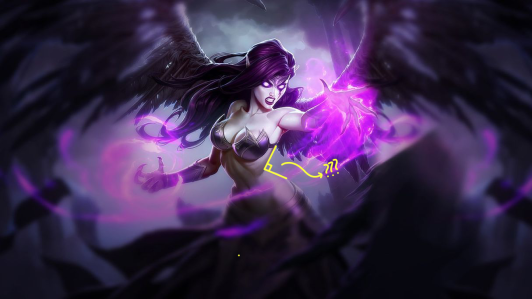
So, Riot, I’d love to know: why are the vast majority of your female characters impossibly beautiful (in the most anorexic, crippled way), and needlessly provocative? Surely there’s a way to present these personas in a compelling and powerful manner to your gamers that doesn’t involve near-nudity or pure sexual appeal?
Independent writer and LoL fan Mattias Lehman presents a potential solution in his article “Gender Representation in League of Legends” to the problem of female objectification within his beloved game: diversify women champions. Currently, almost all are lean, sexy women; most display an absurd amount of skin given their jobs. In fact, a mere 6% of heroes are given skins (alternate designs that players can buy to use within the game) which do not reveal any skin.
Lehman’s simple proposal to design heroes who don’t fit into the ‘skinny and sexy, with a touch of nudity’ category is thus an obvious and perfectly relevant answer to the problem of female sexism within League of Legends. One such character who already fulfills his requirements is Diana, who Lehman himself says that “she looked like… a dark, powerful, scary badass with an unexplored storyline.” At her peak, she was picked by players an astonishing 10% of the time.
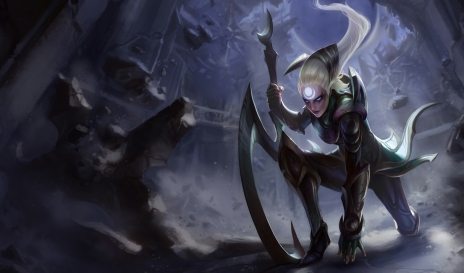
However, Lehman’s argument fails when it comes to the champion Taliyah. Though she is unique in her own right and does not possess the same sexy, impossible beauty standards that are so widespread across the rest of the female characters in the game, her pick rate is a depressing 1.8%, which places her at an underwhelming 135 out of 140 heroes in terms of popularity. In one way or another. Taliyah is lacking in a characteristic that shapes her into an appealing and strong character. Therefore, there must be a factor that Lehman is not accounting for within his argument that simply designing conventionally less attractive women would aid in the perception of women within League of Legends.
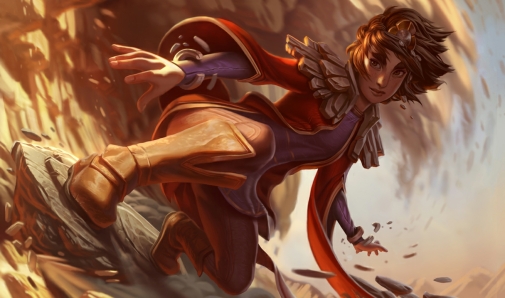
In Christopher Bell’s article “Sexualization and Gamer Avatar Selection in League of Legends”, he posits that a degree of attraction is needed for female champions to appear viable to players; after all, complete disregard for any aspect of beauty also does not benefit the image of women in society. Such attraction and esteem can be found in both the character’s appearance and pose. Judith Rasband argues in “Power of Personal Appearance” that characters who are dressed appropriately and look suited to their role are considered with more credibility. Moreover, body language (as posited by Kim Darrah) plays a big role in how people are perceived; clenched fists and wide-apart legs, for instance, appear more confident and thus garners respect.
For example, Akali would look far more powerful and respectable in traditional wushu getup (rather than her current skimpy armor) while in an actual fighting pose. And speaking of poses, compelling female characters (such as the ones below) can be designed so that they do not require form-fitting armor or nudity to appear powerful, as long as their body language appears dominant.
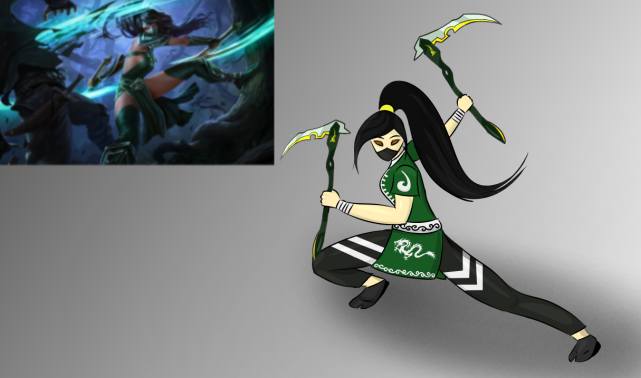
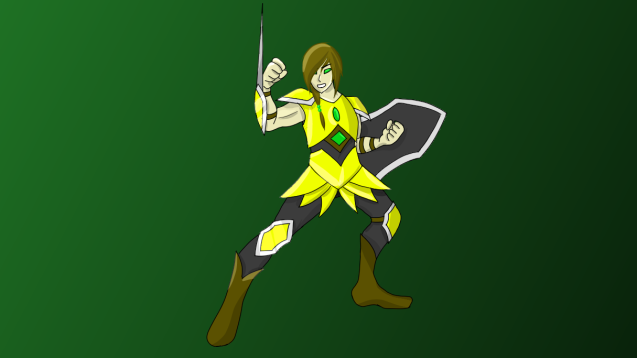
Therefore, League of Legends, which relies on its diverse offering of playable characters to create an engaging user experience, needs to stop objectifying female characters through its champion designs. Riot should combat such misappropriation by illustrating its women in appropriate dress and body proportion as well as compelling body poses. By doing so, League of Legends would positively impact the perception of women in society by displaying them not as objects of sexual pleasure, but as capable warriors who are equal to men.
I think you do a really excellent job of addressing what is no doubt a discrepancy in the representation of females in video games. I know this issue is a recurring one, and I thought your designs were great. One thing I’d be interested to see explored (in conjunction with your argument that female characters need to be portrayed in more powerful positions with more appropriate clothing) is the role femininity plays in the representation of women in video games. I know that in several contexts, there has been debate over whether or not women can retain signifiers of femininity while still being powerful and taken seriously. I would be curious to see how that element plays into your overall argument. Do girls playing League of Legends and looking for a female character typically care if their character displays significant femininity while still retaining power? Is it important that we strike a balance and offer merely a more diverse range of representations of powerful femininity or that we focus on female characters who are more equal to their male counterparts in terms of portrayal? I don’t really have an answer, but I think it’s something interesting to consider. Great post!
LikeLiked by 1 person
I found your side-by-side representation of Alkali and Surgeon Shen to be particularly compelling, as it highlights the discrepancies between the portrayal of male and female champions. Beyond Shen, however, I wonder if male characters are also overtly sexualized in League of Legends. Surely enough, after a quick search on Google, I found champions like Taric and Lee Sin (Muay Thai skin), who, in their chiseled abs and razor-sharp jawlines, seem to fall into the category of sexualized male characters.
In the context of existing research (Bell’s study), would you argue that sexualized male champions are judged to be more powerful than their non-sexual counterparts? Additionally, what forces may drive the sexualization of male champions? I briefly read in a Reddit thread that muscular, attractive male champions allow male gamers to feel empowered—by commanding gruff, macho characters, symbols of masculinity. Then again, the sexualization of male characters may just be a ploy to cater to the female gaze. I thought all of these questions would lead to interesting lines of further research.
Overall, this blog post was a pleasure to read!
LikeLiked by 1 person
As someone who has played an unhealthy amount of League of Legends, I actually found this post (and R3) fascinating to read because the sexualization of some characters has been so obvious to me. But as Kangabryu says in the comment above, it’s true that male champions are also sexualized, as there a certainly many skins that highlight this (such as the Pool Party Skins). Do you think that the sexualization of male champions is also an issue, similar to the sexualization of female champions that you talk about in your blog post? Or do you think that the main issues lie in terms of female champions?
Nowadays, I’m quite highly ranked in League, so I tend to play the characters that are performing the best stat-wise, no matter how they look, because they’ll help me raise my ranking the best. But at the start, I wonder if I chose characters because of how they looked and perhaps if they were sexualized. I think it would fantastic if future studies could look into the differences between new/low-ranked players and high-ranked players and their champion choice because I think they almost certainly will have different reasons for choosing certain champions. Just something to think about!
LikeLiked by 1 person
I love how you not only made your point clear in the title, not only didn’t make it clickbait, but also began to engage with the source right off the bat! That was a really powerful and striking way to start the blog post. Your illustrations not only look great, they also engage with the source material (the other pictures) by pointing out their flaws. If there was one thing I could’ve changed in this article, it would be the inclusion of male champions. They should be set as a background for why you’re writing this; you need to explain why it’s unfair to portray women this way, the answer that men are treated differently can’t just be implicit, it should be explicit. The surgeon was a good attempt, but I think that sexualized male champions should be used as well to prove your point. There are clear differences between the male and the female champions even when they are sexualized. This post was really engaging, and provided some nice clear viewpoints hinted at in your R3. Thanks for sharing!
LikeLiked by 1 person
Hey IIjackofalltradesII, I thought your blog post is very revealing and interesting. I do not myself play the game but a countless number of my friends do and talk about it all the time so it was interesting to learn about this perplexing aspect of the game. Indeed, I find it weird that such a popular game can be so openly sexist. Your argument about the percentage of times characters are picked is especially revealing. I also wonder what percentage of users of the game are male and female which might explain this sexism targeting by the creators. Additionally, I wonder if the sexism translates into the characters in terms of power in the game; maybe the male players being stronger or more powerful.
LikeLiked by 1 person
COOL!!!!! DESIGNS!!!!!!!!
LikeLiked by 1 person